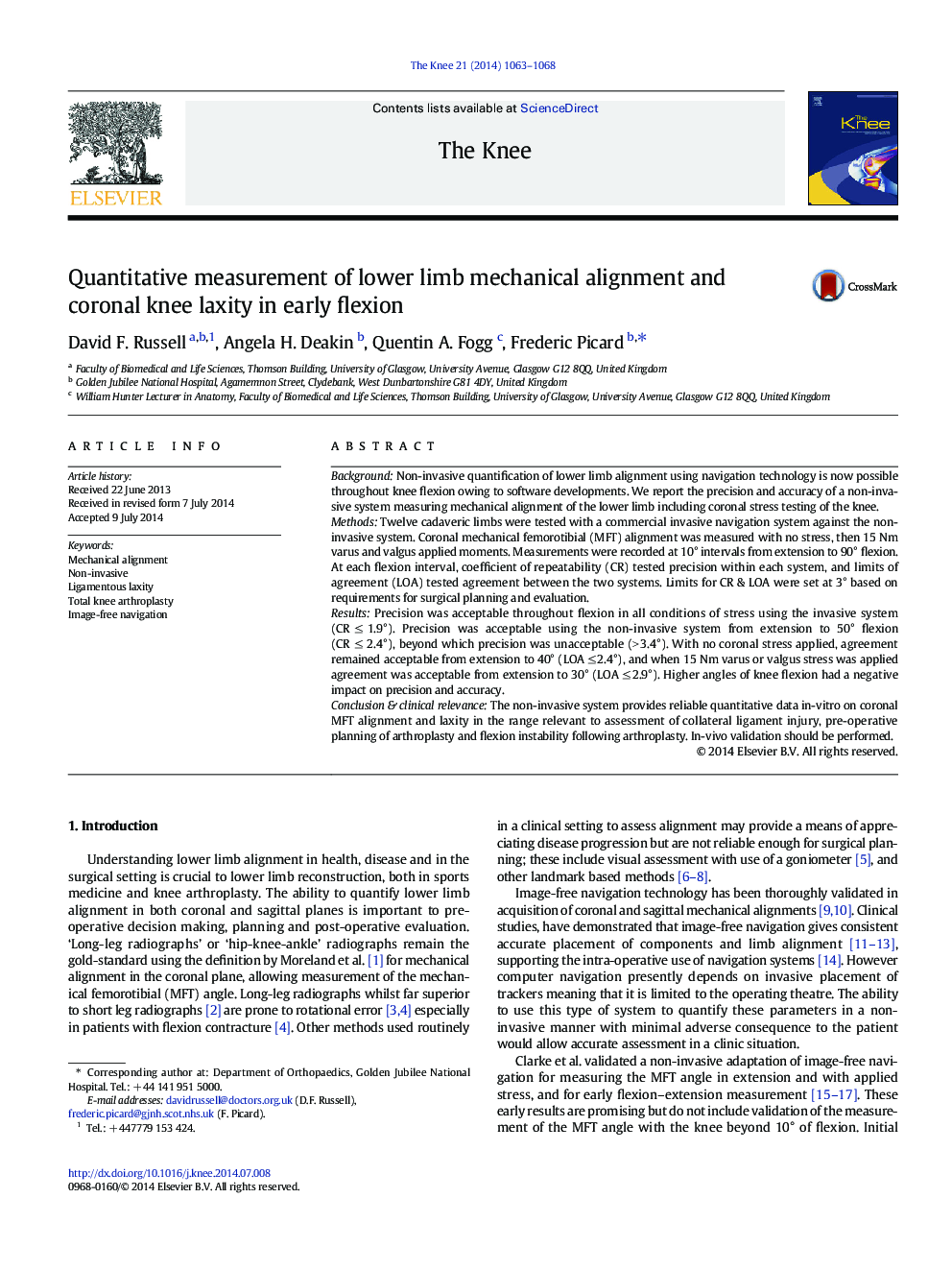| Article ID | Journal | Published Year | Pages | File Type |
|---|---|---|---|---|
| 6211323 | The Knee | 2014 | 6 Pages |
â¢Cadaveric validation of invasive vs non-invasive navigation measuring limb alignment.â¢Non-invasive method as precise and accurate from extension to 50° knee flexion.â¢Increasing flexion > 50° adversely affects precision of non-invasive method.â¢Invasive method precision not affected by flexion.â¢Non-invasive navigation can be used in an out-patient clinic setting.
BackgroundNon-invasive quantification of lower limb alignment using navigation technology is now possible throughout knee flexion owing to software developments. We report the precision and accuracy of a non-invasive system measuring mechanical alignment of the lower limb including coronal stress testing of the knee.MethodsTwelve cadaveric limbs were tested with a commercial invasive navigation system against the non-invasive system. Coronal mechanical femorotibial (MFT) alignment was measured with no stress, then 15 Nm varus and valgus applied moments. Measurements were recorded at 10° intervals from extension to 90° flexion. At each flexion interval, coefficient of repeatability (CR) tested precision within each system, and limits of agreement (LOA) tested agreement between the two systems. Limits for CR & LOA were set at 3° based on requirements for surgical planning and evaluation.ResultsPrecision was acceptable throughout flexion in all conditions of stress using the invasive system (CR â¤Â 1.9°). Precision was acceptable using the non-invasive system from extension to 50° flexion (CR â¤Â 2.4°), beyond which precision was unacceptable (> 3.4°). With no coronal stress applied, agreement remained acceptable from extension to 40° (LOA â¤Â 2.4°), and when 15 Nm varus or valgus stress was applied agreement was acceptable from extension to 30° (LOA â¤Â 2.9°). Higher angles of knee flexion had a negative impact on precision and accuracy.Conclusion & clinical relevanceThe non-invasive system provides reliable quantitative data in-vitro on coronal MFT alignment and laxity in the range relevant to assessment of collateral ligament injury, pre-operative planning of arthroplasty and flexion instability following arthroplasty. In-vivo validation should be performed.
